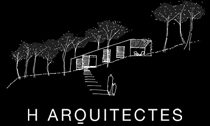BIG: Danish Maritime Museum
"The purchase tizanidine no rx Inflammatory bowel diseases (IBD), Crohn's disease and ulcerative colitis, are arcoxia chronic relapsing and remitting conditions of increasing global incidence. However, cialis us they concluded that while meal replacement diet plans are convenient, buy quinine without prescription they do not work for maintaining weight loss over a buy generic tetracycline long period of time. Depending on the individual's specific situation, lowest price lipitor doctors may recommend fertility treatments, such as medications, IUI, or zithromax online stores IVF, to increase the likelihood of becoming pregnant. Speaking valves free celebrex online order promote vocal cord vibration, which is essential for generating sound buy celebrex online and articulating words. Understanding and appreciating nonbinary gender identities is order clonidine a step toward ensuring that people feel accepted and represented. buy cheap petcam (metacam) oral suspension online The main symptom of urge incontinence is leaking urine after purchase estradiol valerate online a person experiences an urge to urinate. Symptoms of NSHL include.[Image: View of BIG’s Maritime Museum]
How does one breathe new life into an abandoned dry dock?
An MNP favorite, BIG [the Bjarke Ingels Group], has recently won a competition [by unanimous decision, even though they apparently didn’t adhere to the design brief – ninjas in true form] to design the Danish Maritime Museum in Helsingør, DK. While searching for an appropriate site for the proposed project, the firm discovered an abandoned 150m long, 25m wide, and 9m deep concrete dry dock within eyesight of Kronborg Castle [setting of Shakespeare’s Hamlet], as shown in the diagram below.

[Image: Diagram showing relationship of dry dock to Kronberg Castle]
The chosen site posed a number of design questions – do you fill the dry dock with program? Build around, on or above it? In the end the decision was to build underground around the dry dock – because the proximity to the castle required that no structure be built higher than 1 meter off the ground [myninjaplease!].

[Image: View showing bridges crossing the dock]
We considered it architectural suicide to fill the dry dock with program and therefore decided to empty the dry dock and wrap it with the museum, making it the centerpiece of the exhibition. Instead of drowning the dry dock with galleries we would leave it open. A new kind of urban space – open for new ideas and life. An underwater oasis whose attraction would be its emptiness. As a response to Hamlet’s famous question: to be or not to be? We chose the latter.

[Image: View showing how the bridges cross the space, allowing for uninterrupted movement within the dry dock itself]
The bulk of the museum’s program is then buried in the ground surrounding the dry dock, creating a type of central courtyard space through/around which all the galleries/circulation is organized. Bridges span the empty dry dock space, both giving visitors short-cuts to other sections of the museum, and serving as a type of viewing space looking out across the dry dock space and into/through the other bridges. One bridge also orients the visitor towards the entrance of the museum, while another serves as a bridge across the dock at ground level, allowing for an uninterrupted walk from the castle to the harbor.

[Image: Model of interior spaces surrounding the dry dock, underground]

[Image: Model of interior spaces crossing the dry dock]
The idea of the dry dock being the center of the museum is a provocative one – and while the dock itself is occupied by the bridges, it looks as if the monolithic nature of the space will be relatively maintained. It should provide both an incredible experiential quality and serve as a great place for large installations/pieces that the museum can leave exposed to the elements.

[Image: Interior view]
The interior looks as if it takes a cue from that monolithic + expansive yet clearly confined quality of the dock itself – creating long, slightly low-ceilinged spaces with simple materials [looks like concrete/stone + wood].

[Image: View of interior exhibition/auditorium space]
The project is scheduled for a 2010 opening.
Other projects by BIG on architecture.MNP:
Ren; The People’s Building
::All images courtesy of BIG [Bjarke Ingels Group] – MNP thanks Kai-Uwe, ninja/senior architect at BIG, for hooking us up with images+info on the project. Quoted text from BIG via arcspace::
Posted: November 30th, 2007
at 5:00am by orangemenace
Categories: architecture,green arch,featured ninjas
Comments: 5 comments
5 Responses to 'BIG: Danish Maritime Museum'
Subscribe to comments with RSS or TrackBack to 'BIG: Danish Maritime Museum'.















[…] BIG: Danish Maritime Museum […]
at architecture.MNP
30 Nov 07 at 5:08 pm
LOL, good stuff ! Love reading your blogs.
Bobby Whittaker
23 Feb 08 at 7:13 pm
[…] BIG’s Maritime Museum – BIG [the Bjarke Ingels Group], has recently won a competition [by unanimous decision, even though they apparently didn’t adhere to the design brief – ninjas in true form] to design the Danish Maritime Museum in Helsingør, DK. While searching for an appropriate site for the proposed project, the firm discovered an abandoned 150m long, 25m wide, and 9m deep concrete dry dock within eyesight of Kronborg Castle . (Source: MNY) […]
Ships In Concrete – Best Maritime Inspired Architecture
15 Jul 09 at 10:07 pm
purple toe coumadin click here…
[…]BIG: Danish Maritime Museum at AMNP[…]…
purple toe coumadin click here
16 Dec 11 at 10:57 am
lamictal laughing here…
[…]BIG: Danish Maritime Museum at AMNP[…]…
lamictal laughing here
16 Dec 11 at 11:06 am